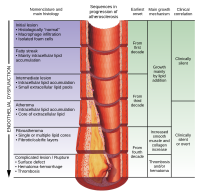
Photo from wikipedia
Although Vitamin C (AA, ascorbic acid; ascorbate ion at physiological pH) has multiple functions in humans its primary role is most likely as antioxidant thereby protecting the organism against continuously… Click to show full abstract
Although Vitamin C (AA, ascorbic acid; ascorbate ion at physiological pH) has multiple functions in humans its primary role is most likely as antioxidant thereby protecting the organism against continuously produced oxidative stress. When ascorbate is oxidized it loses one electron to give an ascorbyl free radical (AR), which subsequently easily undergoes oxidation to dehydroascorbate (DHA). Both AR and DHA are rapidly reduced back to ascorbate by several enzymes including NADH-cytochrome b5 reductase, thioredoxin reductase, protein disulfide isomerase, glutaredoxin-1 (thioltransferase), some glutathione-S-transferases and small thiol containing molecules like glutathione (GSH) and homocysteine (HCY). Homocysteine is a non-protein amino acid, differing from cysteine by an additional –CH2- in the amino acid side-chain. There is a strong correlation between an elevated blood concentration of HCY and the risk of developing oxidative stress related pathologies including cardiovascular and neurological diseases. However, the mechanism(s) by which hyperhomocysteinemia induces endothelial and neurological dysfunction as well as the role of oxidative stress is still unknown. In this study, we demonstrate that DHA catalyses S-glutathionylation and S-homocysteinylation. Oxidative stress catalyzed heterodimer formation was investigated using DHA or hydrogen peroxide in the presence of both HCY and GSH. Interestingly, while hydrogen peroxide favors peptide S-glutathionylation the presence of DHA induces increased thiolation by homocysteine compared to by glutathione. Furthermore, both S-homocysteinylated peptide and Grx-1 can be glutathionylated by disulfide exchange with glutathione dimer. In contrast, preliminary results indicate that GSH reduces the S-homocysteinylated peptide without immediate peptide S-glutathionylation. Moreover, the sites of S-thiolation in recombinant Grx-1 was determined by LCMS/MS analyses. The biological role and type of oxidative stress that direct post-translational protein modifications remain to be further elucidated.
Journal Title: Free Radical Biology and Medicine
Year Published: 2018
Link to full text (if available)
Share on Social Media: Sign Up to like & get
recommendations!